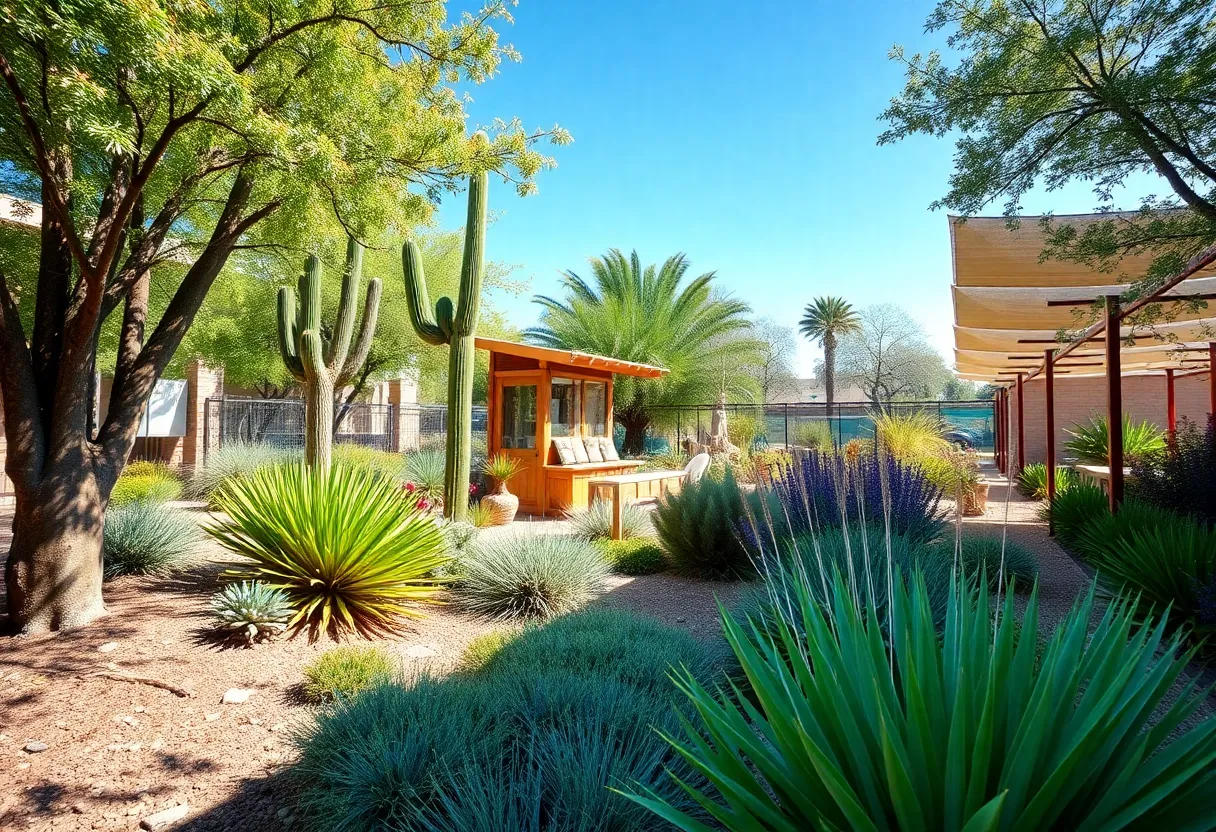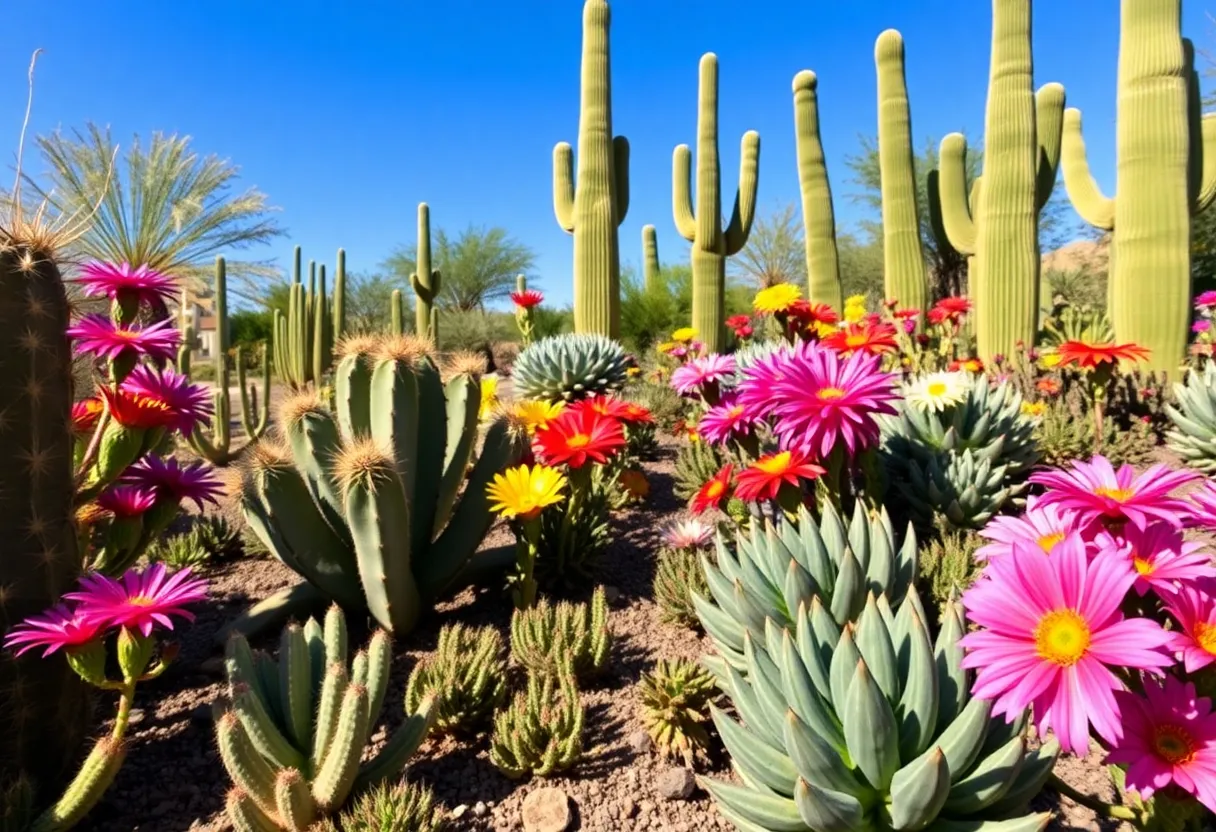5 Essential Steps for Creating a Sustainable Garden in Phoenix’s Desert Climate
Introduction
Establishing a sustainable garden in Phoenix’s arid environment demands strategic planning grounded in an understanding of the region’s unique climate. With average summer temperatures soaring to 111°F and minimal annual rainfall, conventional gardening practices often prove inefficient or unsustainable. Successfully cultivating a thriving, eco-friendly garden in such conditions requires tailored techniques that prioritize water conservation, soil health, and microclimate management. These approaches not only foster plant vitality but also support environmental sustainability and resource conservation.
1. Select Drought-Tolerant, Native Plants
Advantages of Native Flora
In Phoenix’s desert climate, choosing native plants is paramount. These species are inherently adapted to the local conditions, reducing the need for supplemental water, fertilizers, and pest management. Examples include agave, barrel cactus, lantana, and red yucca. Native plants contribute to regional biodiversity and provide habitat for local pollinators. Their reduced water requirements make them ideal for conserving resources and minimizing maintenance.
Designing with Native Plants
Effective garden design involves grouping plants with similar water and sunlight needs—a practice called hydrozoning. This minimizes excessive watering and ensures optimal growth conditions. Incorporate ornamental grasses like Mexican feather grass to add movement and texture. Strategic placement not only conserves water but also enhances aesthetic appeal and ecological harmony within the landscape.
2. Implement Efficient Irrigation Systems
Drip Irrigation Systems
Conventional watering methods often lead to water wastage through evaporation and runoff. Drip irrigation provides precise moisture delivery directly to the root zones, significantly reducing water use. It ensures consistent moisture levels, which promotes healthy plant development and minimizes wastage. This system also reduces weed growth by targeting only cultivated areas, further conserving resources.
Rainwater Harvesting
Capturing and utilizing rainwater is a highly effective, sustainable practice. Installing rain barrels or more advanced catchment systems allows you to collect runoff from rooftops and hard surfaces. This harvested water can be used during dry periods, decreasing reliance on municipal water, lowering bills, and enhancing independence. Proper collection reduces stormwater runoff and pollution, benefiting overall watershed health.
3. Enhance Soil Quality
Amending Desert Soil
Phoenix’s native soil often has poor nutrient content and low water retention capabilities. To foster healthy plant growth, amend soil with organic matter such as compost, well-rotted manure, or biochar. These amendments improve soil structure, increase nutrient availability, and boost moisture retention. Consistent soil improvement yields a resilient foundation for sustainable gardening efforts.
Mulching Techniques
Applying organic mulch around plants offers several benefits. Mulch helps to conserve soil moisture, reduce weed proliferation, and regulate soil temperature. Use materials such as wood chips, straw, or shredded leaves. Ensure an even layer, typically 2–4 inches deep, and replenish as it decomposes or gets displaced. Mulching is a simple yet powerful technique for maintaining soil health and reducing water dependence.
4. Create Microclimates
Strategic Plant Placement
Phoenix’s intense solar exposure and extreme heat can be mitigated by designing microclimates within your garden. Place taller plants or structures to shade more delicate or heat-sensitive plants. For instance, positioning a shade tree can protect understory plants from the harsh midday sun, reducing evaporation and thermal stress.
Utilizing Shade Structures
Incorporating shade structures like pergolas, trellises, or shade cloths further mitigates heat stress. These elements create cooler microenvironments, improve plant resilience, and enhance visual appeal. Use durable, weather-appropriate materials designed for desert climates to ensure structural longevity and consistent performance.
5. Practice Sustainable Maintenance
Regular Monitoring and Adaptation
Sustainable gardening hinges on ongoing observation and adaptive management. Regularly inspect plants for signs of stress, pests, or disease. Adjust watering schedules based on seasonal changes and weather forecasts. Prompt response to issues ensures plant health and minimizes resource use, establishing a resilient garden ecosystem.
Community Engagement
Joining local gardening communities fosters knowledge exchange and collective learning. Attend workshops, share experiences, and learn from others who have successfully adapted to Phoenix’s desert environment. This collaborative approach enhances technical skills and promotes the development of sustainable practices at a community level.
Conclusion
Building a sustainable garden in Phoenix’s desert climate is a strategic endeavor that promises both environmental and aesthetic rewards. By adopting a native plant-centric approach, employing efficient irrigation, restoring soil health, creating microclimates, and maintaining adaptable practices, gardeners can cultivate landscapes that thrive despite harsh conditions. These methods conserve water, support regional ecology, and foster long-term resilience in desert gardens.
FAQ
Q1: What are the best native plants for a desert garden in Phoenix?
Native plants such as agave, barrel cactus, red yucca, and lantana are ideal due to their adaptation to the arid climate, requiring minimal water and maintenance.
Q2: How can I conserve water effectively in my desert garden?
Implement drip irrigation, rainwater harvesting, and mulching techniques. Group plants with similar needs and utilize microclimate-building strategies to further reduce water use.
Q3: What soil amendments are suitable for desert gardening?
Use compost, well-rotted manure, or biochar to enrich native soils, increase water retention, and provide essential nutrients for plants.
Q4: How can I protect my plants from extreme heat?
Position taller plants or structures to create shade, and incorporate shade cloths or pergolas to reduce direct sun exposure and thermal stress.
Q5: Why is community engagement important for sustainable gardening?
Engaging with local gardening groups provides access to shared knowledge, best practices, and support, helping gardeners to adapt successfully and foster regional ecological health.
Key Features Chart
| Feature | Description | Benefit |
|---|---|---|
| Native Plants | Plants adapted to local climate | Low water, low maintenance, supports biodiversity |
| Efficient Irrigation | Drip systems and rainwater harvesting | Water conservation, targeted delivery |
| Soil Improvement | Organic amendments and mulching | Enhanced nutrient and moisture retention |
| Microclimate Creation | Shade structures and plant placement | Temperature regulation, stress reduction |
| Sustainable Maintenance | Monitoring, community engagement | Resilience, knowledge sharing |
Author: STAFF HERE PHOENIX WRITER
The PHOENIX STAFF WRITER represents the experienced team at HEREPhoenix.com, your go-to source for actionable local news and information in Phoenix, Maricopa County, and beyond. Specializing in "news you can use," we cover essential topics like product reviews for personal and business needs, local business directories, politics, real estate trends, neighborhood insights, and state news affecting the area—with deep expertise drawn from years of dedicated reporting and strong community input, including local press releases and business updates. We deliver top reporting on high-value events such as the Waste Management Phoenix Open, Cactus League Spring Training, and Arizona State Fair. Our coverage extends to key organizations like the Greater Phoenix Chamber of Commerce and Visit Phoenix, plus leading businesses in technology and healthcare that power the local economy such as Intel and Banner Health. As part of the broader HERE network, including HERETucson.com, we provide comprehensive, credible insights into Arizona's dynamic landscape.





